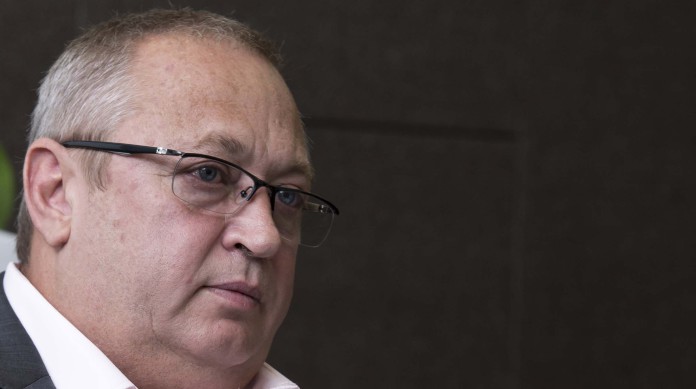
SIBANYE-Stillwater is to cut up to 60,000 ounces of annual platinum group metal (PGM) production as part of restructuring plans which were being “wrapped up,” said group CEO Neal Froneman.
“It is a very small impact on production,” he said in an interview on the sidelines of the Mining Indaba conference in Cape Town. Sibanye-Stillwater is expected to produce 1.7 to 1.8 million oz of PGMs from its South African assets for its 2023 financial year.
Sibanye-Stillwater issued a Section 189 restructuring notice in October which it said could affected more than 4,000 employees in its South African PGM business. Three shafts will be affected as previously announced: B4 and Rowland shafts in the Marikana (former Lonmin) section, and Siphumelele shaft in the Rustenburg Mines business.
“B4 and Rowland shafts were part of Lonmin that should have been closed at the time of our acquisition of the company (in 2019), but we agreed to keep them open; in the case of B4 shaft two years longer than we planned,” said James Wellstead, spokesperson for Sibanye-Stillwater. Employee numbers at Siphumelele shaft have to be reduced after areas were previously closed following seismicity.
Froneman also said another round of restructuring at Stillwater mine, its US-based palladium/platinum operation had been concluded. In terms of this, Sibanye-Stillwater would not expand production to 700,000 oz/year by 2027.
The 40% plus decline in the palladium price had placed enormous pressure on Stillwater, but Froneman said Sibanye-Stillwater would not bow to pressure to close the mine. “It has too much strategic importance for us,” he said.
Sibanye-Stillwater is due to announce its full year results on March 5 which analysts fear could see a $6bn cash outflow. Froneman dismissed the speculation: “That’s if we were to do nothing but we have announced cost saving measures,” he said.
Nonetheless, the results are expected to be grim reading for investors after bumper profits for the firm’s 2022 financial year.
The group courted further controversy in November when it announced a $500m convertible bond aimed at financing its growth, including the $155m acquisition of the US metals recycling company Reldan Group.
“It was a perfect time to do the corporate bond; I would have done one earlier but hindsight is a perfect science,” said Froneman who added now was the time to make further acquisitions as valuations were down.
The lithium price fell about 80% last year to around $12,000/t while the nickel price is also under pressure. In both metals, new major supplies have come into the market.
According to Morgan Stanley, mined supply of lithium is expected to increase to 1.37 million tons this year from 1.02Mt in 2023. Of this about 114,000 tons and 62,000 tons – about half – will come from China and Zimbabwe respectively. It will swamp new demand leading to a 157,000 ton surplus, the bank said.
“Now is absolutely the time to look for new opportunities, new acquisitions,” said Froneman who added, however the company wasn’t working on a specific deal at the moment.
He also said he didn’t fear for the firm’s Keliber mine in Finland which is only scheduled to produce third party lithium next year, and from its own resources in 2026. Given its location to Europe, buyers would be prepared to pay a premium for the mineral that China currently controls, he said.











